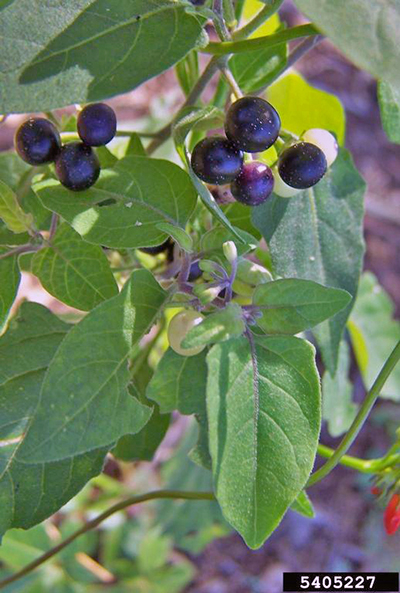
Round Bale Silage (baleage) destroyed by Hurricane Michael in Gulf County. Credit: Ann Blount, UF/IFAS
Forage and livestock related issues stemming from our recent bout with Hurricane Michael has impacted our livestock in ways that are still being felt. For starters, a rainy Spring-Summer-Fall did not help with the forage quality of our pastures, hay production or silage harvests. If you were lucky enough to harvest hay and were not sabotaged by nearly daily rain showers, any attempt at fertilizer application was met with the same rainfall deluges, as well as concerns about leeching of our most costly pasture expense- fertilization. Those of you who were lucky enough to put up baleage had rolls and tubes that were heavily damaged by Hurricane Michael’s winds.
So where are we today? Many of us in the 11-county impact zone have a limited quantity of poor quality hay. No opportunity to plant winter grazing, or it was planted so late that cattle can’t utilize it yet. In other words, you are going to be “short on groceries” for your cattle and other livestock concerns (sheep, goats, horses, etc.). Even the lucky ones, who did not have trees all over their pastures and were able to plant winter forages, have suffered as wet conditions prevented fertilizing in a timely manner. Those producers with trees in pastures were advised last fall to broadcast ryegrass as a possible option, although late, some forage is better than no forage. Many of us rely on gin trash, cotton seed hulls, cotton seed, and other locally available supplements. If available, the investment may be necessary. Many of our supplementation operations were also damaged by Hurricane Michael, so cheap alternatives may not be easily available.
While we can discuss supplementation options, let us first try to remedy the forage issues. There are several forages that may be planted in early winter and will still produce ample forage to, at least, help out in a forage shortage. Florida 401 cereal rye, Legend oat and Trical 342 triticale are three forage varieties that could be planted very late and still produce enough forage to cover seed and fertilizer expenses. You won’t maximize their forage production potential, but even with this late planting, you will get a return on your investment. Late maturing varieties may just not produce enough forage to really compensate for the seed or planting costs. Also, some seed source operations may be willing to reduce the price of the seed so they do not have to carry their inventory over until next year. Consider asking for a break in seed price since it is so late in the season for the planting window. Those of you who were able to plant winter forages, timing of fertilizer is now critical. In the long run, livestock will benefit from high quality winter forages, a little late, but a little of something good is better than nothing or totally relying on limited poor quality hay.
Also, we have been experiencing an abnormally high incidence of weed-related livestock poisonings. I have been to ranches now in 5 counties with downed or dead cattle that are the result of poisonous plant ingestion. For cattlemen feeding poor quality hay, with limited or no winter grazing or commodity supplements, the cattle are hungry, as well as protein and energy deficient. In these particular cases the cattle have consumed weeds to make up for the short fall. Deadly nightshade, has been implicated in cattle deaths in at least 3 counties .
While weeds, such as coffee weed, coffee senna and crotalaria, may be problematic to livestock, they are typically “cumulative” in their poisoning, and it takes chronic exposure and consumption for the livestock to generally express poisoning symptoms. In many of these recent cases, a more “acute” reaction has been seen with large numbers of cattle succumbing to poisoning and dying quickly, a reaction we would see in deadly nightshade ingestion or, possibly, nitrate or cyanic acid poisoning. I recommend routinely scouting pastures for the presence of poisonous weeds and removing them either chemically or physically to avoid livestock exposure. Checking fence rows, water troughs, shade tree loafing areas and working pens for poisonous plants is a good start, because many poisonous plants are carried by birds who rest and drop seeds along those sites. Many tree species were compromised by the storm and some trees, such as cherry laurel, have poisonous properties, like cyanic acid. Be vigilant in scouting where livestock are grazing and familiarize yourself with poisonous plants and tree species in our area. If poisoning is suspected, contact your local veterinarian or state animal health inspector, or your local county agent for immediate help. Removing stricken herds to a new pasture, supplying clean hay, fresh water and a protein supplement is advisable.
Information on poisonous pants may be found on-line at many reliable sites. Here are a few suggested links that you might find useful and a Powerpoint presentation by UF-IFAS Weed Scientist-Jay Ferrell. Remember that any mention of herbicides used for chemical control of these weeds may not be legally applied in Florida, so remember to read the chemical labels or consult weed control with your local county agent.
PowerPoint presentation: Poisonous Plants in Pastures – by Jason Ferrell
Poisonous Plants of the Southern United States
Plants Poisonous to Livestock and other Animals
Plants Poisonous to Livestock in the Southern US
Toxic Plants
- Cool-Season Forages – A Pasture Perspective for 2022 - September 16, 2022
- Ornamental Rhizoma Perennial Peanut for Groundcover or Alternative Turf - March 18, 2022
- 2021 Cool-Season Forage Recommendations for Livestock and Wildlife - September 24, 2021

